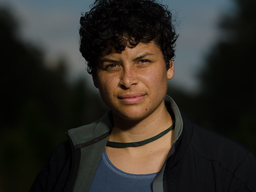Seminar with Dr. Christine Hawn: "If Spiders Could Talk"
Using spiders as bioindicators of habitat quality
Location
Technology Research Center (TRC) : 206
Date & Time
February 2, 2018, 2:00 pm – 3:00 pm
Description
UMBC
Center for Urban Environmental Research and Education
Spring 2018 Seminar Series
presents
Dr. Christine Hawn
Dept. of Geography and Environmental Systems
UMBC
“If spiders could talk: Using spiders as bioindicators of habitat quality”
Friday, February 2, 2018
2:00 PM
TRC 206, UMBC
**********************************************************************************
Parking policy
Parking passes for off-campus guests in the TRC lot are required at the cost of $4.00 per car. Parking passes may be picked up and paid for (cash only) before seminar by stopping by the CUERE office in TRC 102 /105 and seeing a staff member. Please contact us at 410-455-1763 with any questions regarding logistics.
View our web site at http://cuere.umbc.edu
2:00 PM
TRC 206, UMBC
This seminar series http://cuere.umbc.edu/seminar-series/ is free and open to the public.
**********************************************************************************
Parking policy
Parking passes for off-campus guests in the TRC lot are required at the cost of $4.00 per car. Parking passes may be picked up and paid for (cash only) before seminar by stopping by the CUERE office in TRC 102 /105 and seeing a staff member. Please contact us at 410-455-1763 with any questions regarding logistics.
View our web site at http://cuere.umbc.edu
Abstract
Maintaining and in some cases, increasing, biodiversity is a central goal for conservation. Because many threats to biodiversity are human related, how we design and manage the built environment has severe consequences for conservation. Here, I demonstrate how spiders can serve as bioindicators for testing habitat quality in a fragmented landscape.
I show that one simple design strategy, adding corridors, has overwhelmingly positive effects across the food web. Corridors, connecting fragments of habitat, are a conservation strategy designed to decrease extinction of plants and animals in isolated habitats by increasing their movement. I found that corridors benefit plants, pollinators, and their predators through an increase in movement and access to resources.
